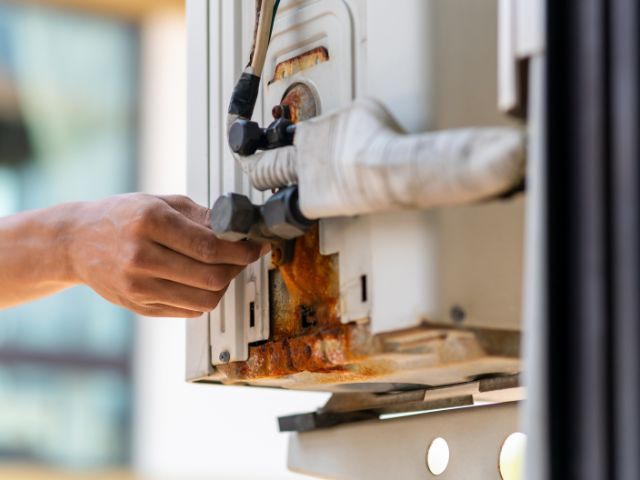Table of Contents
Common Causes of Refrigerator Leaks
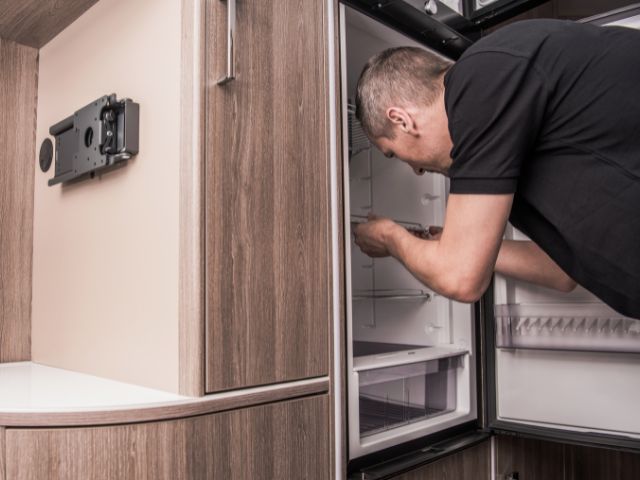
- Clogged Defrost Drain The defrost drain is designed to remove excess water from your refrigerator during the defrost cycle. Over time, it can become clogged with debris, food particles, or ice buildup, leading to leaks. Water may pool at the bottom of your fridge or leak onto the floor.
- Leaky Water Supply Line Many modern refrigerators come equipped with water dispensers and ice makers, both of which rely on a water supply line. If this line becomes damaged, pinched, or improperly connected, water can seep out and cause a leak.
- Damaged Door Gasket The door gasket is the rubber seal around the refrigerator door that helps maintain the cold temperature inside. A damaged or worn gasket allows warm air to enter, causing condensation inside the fridge and leaks on the floor.
- Faulty Water Filter If the water filter is not installed correctly or has become clogged, water can escape from the filter compartment. Regular filter replacement is necessary to avoid this issue.
- Malfunctioning Defrost System A malfunction in the defrost system can lead to ice buildup, which eventually melts and creates a puddle in or around the fridge. This issue often arises from a defective defrost thermostat or heater.
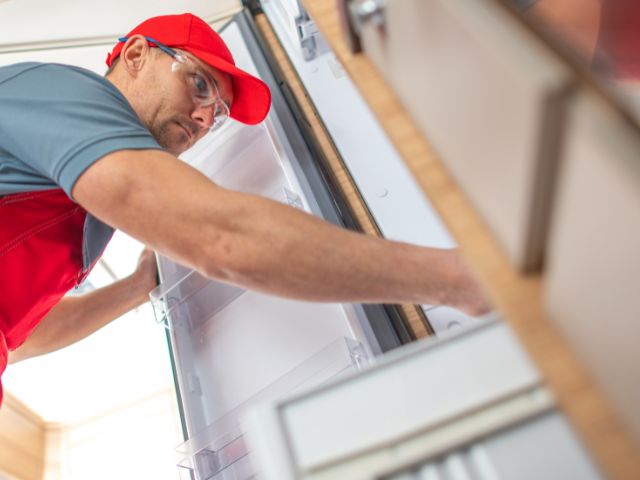
How to Identify the Source of the Leak
- Check the Floor Around the Fridge Begin by inspecting the floor around your refrigerator. Is the water pooling in a particular spot? This could help you determine if the issue is with the water supply line, drain pan, or defrost drain.
- Inspect the Interior Open your refrigerator and check for water inside. If you see puddles at the bottom, the defrost drain might be clogged. If water is pooling under the crisper drawers, the issue could be with the drain pan or blocked airflow.
- Examine the Water Supply Line If your refrigerator has a water dispenser or ice maker, take a close look at the water supply line at the back of the appliance. Ensure that the connections are tight and the hose is not damaged.
- Inspect the Door Gasket Check the door gasket for any cracks, gaps, or tears. A faulty gasket can cause condensation to form inside, leading to leaks.
- Test the Water Filter If your refrigerator has a water filter, verify that it is properly installed. Remove the filter, inspect it for clogs, and reinstall it securely.
Step-by-Step Guide to Fixing Refrigerator Leaks
Fixing a Clogged Defrost Drain
- Turn Off the Refrigerator Unplug the refrigerator or turn off the circuit breaker to ensure your safety while working.
- Locate the Defrost Drain The defrost drain is usually located at the bottom of the freezer compartment. Consult your refrigerator’s manual for its exact location.
- Clear the Drain Use a pipe cleaner or a turkey baster filled with hot water to clear any blockages in the drain. You can also use a mixture of warm water and mild soap to clean the drain thoroughly.
- Test the Drain Pour a small amount of water down the drain to ensure it’s flowing freely.
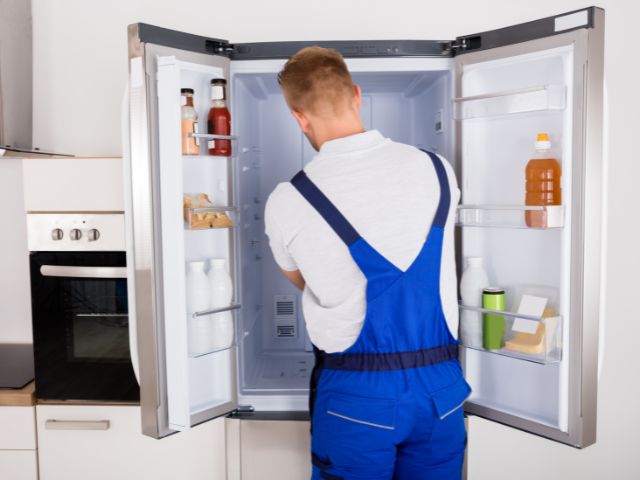
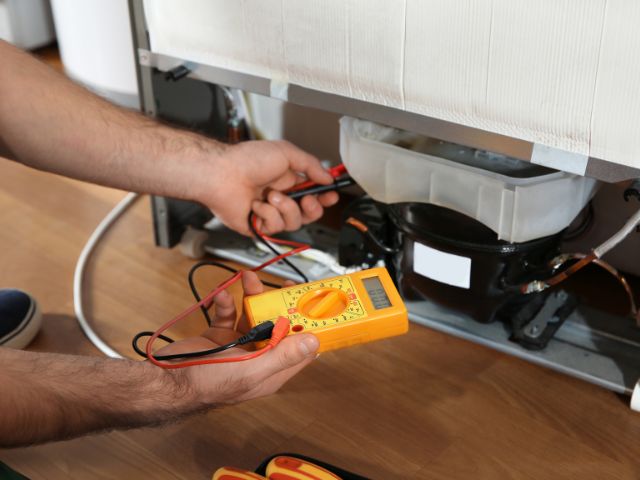
Repairing a Leaky Water Supply Line
- Turn Off the Water Supply Locate the valve that supplies water to your refrigerator and shut it off to stop the flow.
- Inspect the Water Line Look for any kinks, tears, or leaks in the water supply line. If you find any damage, you will need to replace the hose.
- Replace the Water Line If the hose is damaged, remove it and replace it with a new one. Ensure all connections are tight and secure.
- Turn the Water Back On Once the repairs are complete, turn the water supply back on and check for any further leaks.
Replacing a Damaged Door Gasket
- Order a Replacement Gasket Purchase a replacement door gasket that matches your refrigerator model.
- Remove the Old Gasket Gently pull the old gasket away from the door, starting at the corners. Be careful not to damage the surrounding area.
- Install the New Gasket Line up the new gasket and press it firmly into place, ensuring that it forms a tight seal all around the door.
- Test the Door Seal Close the door and check for any air leaks or gaps. If the seal is tight, the repair is complete.
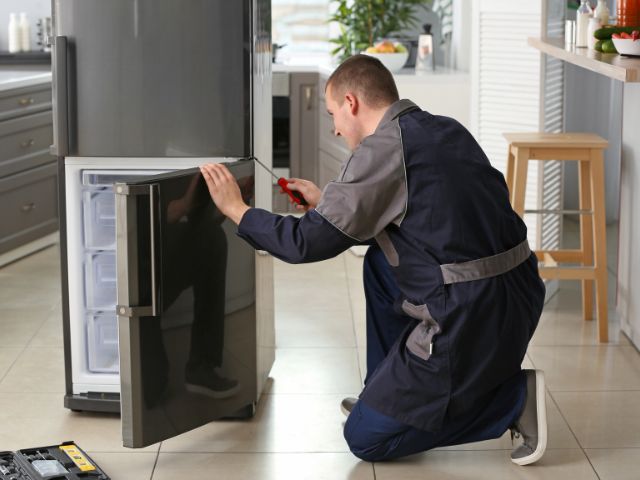
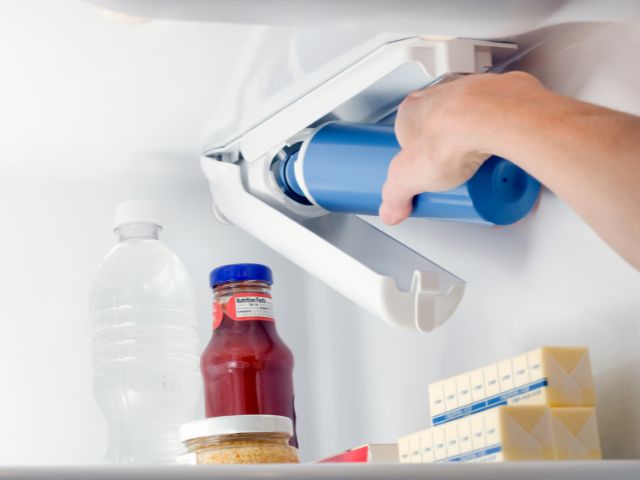
Changing the Water Filter
- Remove the Old Filter Follow the manufacturer’s instructions to remove the existing water filter from your refrigerator.
- Install the New Filter Insert the new filter according to the instructions and ensure it is properly seated.
- Run Water Through the Dispenser After installing the new filter, run water through the dispenser for a few minutes to clear any air from the lines.
Preventing Future Refrigerator Leaks
To avoid future refrigerator leaks, follow these preventive refrigerator maintenance tips:
- Clean the Defrost Drain Regularly: Keep the defrost drain free of debris by cleaning it every few months.
- Inspect Water Lines: Regularly check your refrigerator’s water supply line for signs of wear or damage and replace it as needed.
- Replace Water Filters: Change the water filter every six months to prevent clogs.
- Examine Door Gaskets: Inspect the door gaskets periodically to ensure they are sealing properly. Replace them if they show signs of wear.
- Keep Your Fridge Level: Ensure your refrigerator is level to prevent leaks from occurring due to uneven footing.
By following these simple steps, you can maintain your refrigerator in peak condition and prevent leaks from causing damage to your home. For more extensive issues, consider professional refrigerator repair services to ensure the problem is properly resolved.
Conclusion
By addressing refrigerator leaks early and following proper refrigerator maintenance service tips, you can avoid water damage and extend the life of your appliance. Regularly inspecting key components like the defrost drain, water supply line, door gasket, and water filter will keep your refrigerator running smoothly. However, if you encounter more complex issues or prefer professional assistance, it’s best to trust experienced technicians to handle the job.
For reliable and certified appliance services, including refrigerator repair, contact 5 Star Appliance Repair. Their skilled team is ready to provide efficient solutions, ensuring your fridge stays leak-free and in excellent working condition. Don’t let a minor leak turn into a major problem—reach out to the experts today!
FAQs
Why is water pooling at the bottom of my refrigerator?
A clogged defrost drain is the most common reason for water pooling. Clearing the drain should stop the leak.
How often should I replace the water filter in my refrigerator?
It’s recommended to replace the water filter every six months to prevent clogs and leaks. This also ensures your water and ice remain clean.
Can a faulty door gasket cause leaks?
Yes, a damaged door gasket allows warm air to enter, leading to condensation and leaks. Replacing the gasket ensures a proper seal and prevents this issue.
What should I do if my refrigerator’s water supply line is leaking?
First, turn off the water supply and inspect the line for damage. If it’s torn or kinked, replace the line to stop the leak.
When should I call a professional for refrigerator leaks?
If you can’t locate the source of the leak or the issue involves complex parts, it’s best to contact a professional. Certified technicians can quickly diagnose and repair the problem to prevent further damage.

